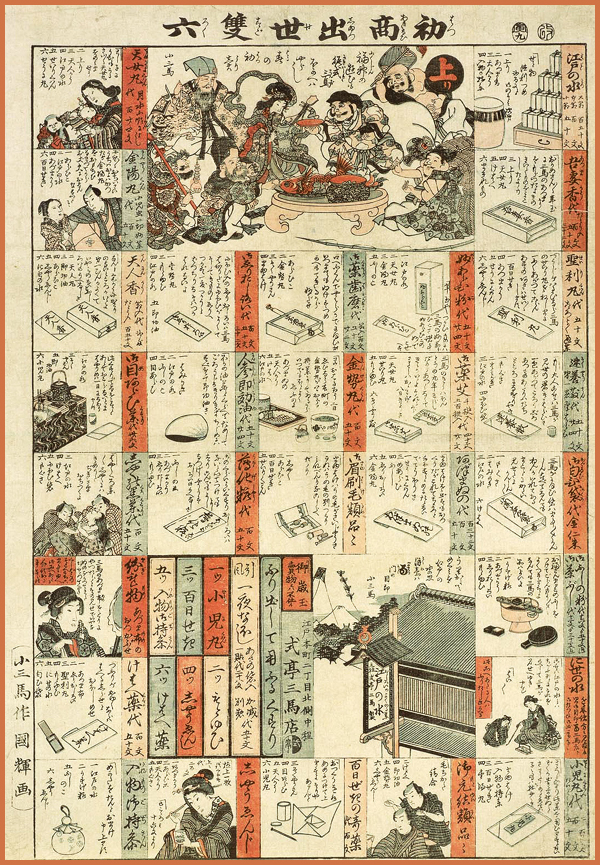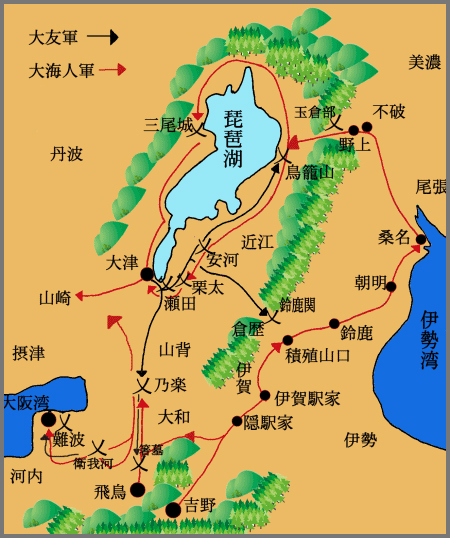. Japanese legends and tales 伝説 民話 昔話 - Introduction .
. Legends about animals 動物と伝説 .
::::::::::::::::::::::::::::::::::::::::::::::::::::::::::::::::::::::::::::::::::::::::::::::::::::::::::::::::::::::::::::::::::::::::::::::::::::::::::::::::::::::::::::::
kinkei 金鶏と伝説 Legends about the golden rooster
oogon no tori オウゴンノトリ / 黄金の鶏 golden rooster // 金の鶏 / 金のにわとり kin no niwatori
. niwatori 鶏と伝説 Legends about the rooster, cock, chicken .
In Okayama, there is a
Kinkeizuka Kofun 金鶏塚古墳 burial mound.
瀬戸内市長船町西須恵 / Setouchi, Osafunecho Nishisue
..............................................................................................................................................

::::::::::::::::::::::::::::::::::::::::::::::::::::::::::::::::::::::::::::::::::::::::::::::::::::::::::::::::::::::::::::::::::::::::::::::::::::::::::::::::::::::::::::::
- - - - - ABC List of the prefectures :
............................................................................... Aichi 愛知県
碧海郡 Hekikai district 矢作町 Yahagicho
kinkei 金鶏
異国の王様の使者を埋めたという塚があり、俗に王塚と称している。その塚には金鶏も一緒に埋められており、時折鳴くことがある。その声を聞くと幸を受けるという。
.......................................................................
知多郡 Chita district 南知多町 Minami-Chita
kin no niwatori 金のにわとり
北奥田の城山の朝日夕日の輝く木の下に,金のにわとりと小判が埋めてあるとの言い伝えがある。
.......................................................................
Aichi 知多郡 Chita district 美浜町 Mihama
kaminari matsu 雷松 "pine of thunder"
At an estate in 河和 Kowa near the beach there was a huge pine tree. The area had a lot of lightning and thunderstorms, so the pine got its name.
Legend says the lightning stikes here because at the foot of the tree there is a golden tea kettle or maybe a golden rooster buried.
But the tree has now withered and is no more.
. kaminari 雷と伝説 Legends about Thunder and Lightning .
- - - - -
kin no tori 金の鶏
「朝日さす夕日かがやく木のもとに 金の鶏埋けられて居り」という歌が城山の物語とともに伝えられている。掘り当てた人の話を聞かないので、未だに埋まっているかもしれない。夏から秋にかけて、天気の良い日が続くと、城山から火が出るといわれていて、その火は下から上へ上り、ある一点まで来るとぱらっと散ってしまうという。
............................................................................... Fukushima 福島県
石城郡 Iwaki disdrict 草野村 Kusanomura
kinkei 金鶏
昔、館の落ちるときに金の鶏を井戸の中に投げ入れて落ちのびた。この金鶏が時々鳴くことがあるのを村人はよく聞くことがある。
............................................................................... Gifu 岐阜県
多治見市 Tajimi
kinkeizuka 金鶏塚 Mound of the Golden Rooster
At the back of Mount Kokeizan there is a Mound of the Golden Rooster, where the animal has its grave.
But on the New Year's day, people can hear him calling.
If people suffer from hemorrhoids, they offer 赤飯のおにぎり rice balls made from red ritual rice, called tori no ko 鳥の子 "children of the bird" in the number of their own age - and will be cured.
- 虎渓山
- reference source : kokei.or.jp... -
- quote -
永保寺 Kokeizan Eihoji Temple
located in Tajimi City, Gifu Prefecture was established by the Nanzen-ji branch of Rinzai Zen Buddhism. The temple was founded in 1313 and contains two buildings that are listed as National Treasures. These are the Kannon-do and Kaisan-do. The temple grounds and gardens are breathtakingly beautiful and have been designated as a place of National Scenic Beauty. They include a stunning Zen garden with pond, bridge, and waterfall....
The buildings within the Kokeizan Eihoji Temple complex are very interesting and combine both Chinese and Japanese architectural styles. Kokeizan Eihoji Temple is also ranked one of the best spots in Gifu Prefecture for momiji or autumn leave viewing.
- more - source : japantraveladvice.com/kokeizan-eihoji-temple -
............................................................................... Hyogo 兵庫県
加東郡 Kato district
koganezuka 黄金塚
平資盛が敗走するとき、愛する香器(黄金製鶏形香爐)を捨てる事ができず埋めた。以来七百余年の間、香爐の霊が附近の深山に現れ、哀れな声をもらして、世に出たいと訴えることが度々あった。
kinkei 金鶏
宝塚古墳とは黄金の鶏を埋めた故にこの名がついたとされ、松尾村が滅びる恐れのある場合は発掘して金鶏を取り出すべしと伝えられる。また、嫁泣き塚ともいい、金鶏が度々鳴いて、村に大事あると吉凶を伝える。ある者が発掘して金鶏を捕らえようとすると、金鶏は塚を出て飛び去った。
Harima no Kinkei Legends - 播磨の金鶏埋宝伝説
. Kofun legends .
............................................................................... Iwate 岩手県
下閉伊郡 Shimohei district 岩泉町 Iwaizumi
金の鶏 and ushi 牛
安家川の淵には、夜、牛が出てきて草を食う。あるとき、その牛が金の鶏に変じて飛んでいった。また、淵の中に木の枝があるので見ていると、枝が頭を持ち上げた。よく見ると牛であった。
............................................................................... Kyoto 京都府
亀岡市 Kameoka 千歳町 Chitose
oogon no niwatori 黄金の鶏 the golden rooster
At the Kofun called 車塚 Kurumazuka there was a golden rooster burried among other things. Some people hear his call on the New Year's morning and they are said to be successfull later in life.
- - - - -
Niwatorizaka にはとり坂 the slope of the rooster
Once the villagers tried to dig out a golden rooster which was buried under a mound. But there came an arrow with white feathers sticking at the bottom of the slope.
And all the villagers soon died of an epidemic.
.......................................................................
船井郡 Funai district 京丹波町 Kyo-Tanba
oogon no niwatori 黄金の鶏
昔、長者が住んでいたといわれる屋敷跡には黄金の鶏がいて、節分の晩に鳴くと伝えられている。
............................................................................... Mie 三重県
. Shiraisan 白猪山 "White Boar Mountain" .
with legends about the golden rooster from 松坂市 Matsuzaka city, 員弁郡 Inabe district 梅戸井村 Umedoicho and 一志郡 Ichishi district 久居町 Hisai
- see below
.......................................................................
松坂市 Matsuzaka
oogon no niwatori 黄金の霊鶏 the golden rooster
Lord Tachibana from Kyoto had a revelation from 不動明王 Fudo Myo-O, so he settled in 伊勢の大石 Oishi, Ise in a new estate. His son was greatly loved by the local farmers and merchants.
Because of a secret treasure of 黄金の霊鶏 a ritual golden rooster he could heal illness and people thought he was a 神 Kami deity indeed.
.......................................................................
. bikuni densetsu 比丘尼 伝説 Legends about Buddhist nuns .
yao bikuni 八百比丘尼(やおびくに)nun for 800 years
A woman never growing old, because once she ate the meat of a "human-fish"
、孤独からか里に出なくなり、やがて故郷の草生で八百歳で死んだ。毎年元旦の未明には黄金の鶏が鳴くという。
.......................................................................
oogon no niwatori 黄金の鶏 golden rooster
At the well 一ノ井 Ichinoi near the waterfall 赤目の滝 Akame no Taki 道潅長者 the venerable Dokan died and had a golden rooster burried with him.
This is the origin of the name Takarazuka 宝塚 "Treasure mound".
.......................................................................
Mie 員弁郡 Inabe district 梅戸井村 Umedoicho
kinkei 金鶏 golden rooster
At the remains of 長者屋敷 the venerable millionairs estate there is a saying:
On New Year, there is a rooster calling from the Yumi Mound.
正月や憂見の塚に鶏が鳴く
At another place where the rooster can be heard there was 巨松a huge pine tree.
.......................................................................
Mie 一志郡 Ichishi district 久居町 Hisai
oogon no tori 黄金の鶏 golden rooster
Below a large セボの木 Sebo tree there is a golden rooster burried and with him a long golden rope.
When the village is in trouble, the rooster can be heard and the villagers dig out the rope and make it to money.
............................................................................... Nara 奈良県
.......................................................................
Nara 五條市 Gojo
oogon no tori 黄金の鶏
井上内親王の御霊に金の鶏が埋めてあり元日の朝に鳴くという。花畑という芝生に黄金の鶏が埋めてあり元日の朝鳴くという。荒坂という所にむかし長者が住んでいた。その家の米のとぎ汁が二つの池になった。その二つの池のあいだに石の橋があり、その下に黄金の鶏が埋めてあり元日の朝に鳴くという
.......................................................................
Nara 大柳生町 Oyagyucho
kinkei kofun 金鶏古墳
. Kinkei Kofun 金鶏古墳 Kinkei burial mound.
.......................................................................
Nara 月ヶ瀬村 Tsukigase
kin no niwatori 金の鶏
昔、城庵というところに城があり、黄金塚と呼ばれている。埋められた軍資金は誰かが掘ったという話だが、一緒に埋められた金の鶏を取った話は聞いていない。
............................................................................... Osaka 大阪府
.......................................................................
和泉市 Izumi
oogon no niwatori 黄金の鶏
黄金塚では元日に黄金の鶏が鳴く.
.......................................................................
大阪市 Osaka city
shinkin no niwatori 真金の鶏
大坂の豪商・淀屋辰五郎が所蔵していた宝物の中に、元は唐の玄宗皇帝が所持していたという一羽の黄金の鶏があり、家に何らかの変事があるときは一声を出すという。
............................................................................... Shiga 滋賀県
東浅井郡 Higashi-Azai district 虎姫町 Torahimecho
kin no niwatori 金の鶏
元日になると、金のにわとりが椿の上で鳴く。椿の木はもう無いが、金のにわとりは今では土の中に埋まっているという。
-
月ヶ瀬城の倉にあり、城が焼けた時に土砂に埋まってしまった金のにわとりを掘り出そうとするたびに怪我人が出る。天変地異の起きる前の晩に、悲しい声をあげて知らせてくれる。
.......................................................................
Shiga 甲賀郡 Koga district 信楽町 Shigaraki
kin no niwatori 金の鶏
笹ヶ岳の頂上でかきまわすと雨が降ると伝えられる井戸の水があった。若い猟師がやってみると、山へ降りた途端に大雨が振り出した。この笹ヶ岳の頂上では元旦の朝、金のにわとりが鳴くと伝えられている。
............................................................................... Tokushima 徳島県
那賀郡 Naka district 桑野村 Kuwanomura
oogon no tori 黄金の鶏
musorokubu no tatari 六十六部の祟り curse of Musorokubu ムソロクブ (Rokujurokubu)
The golden rooster in the possesion of a Rokubu pilgrim and a box with a mosquito net that could change its size according to the room, it was so precious to the family where he stayed over night at the end of the year, they killed him in a riverpool.
The family now had to suffer the curse of the Rokubu. Whenever they pounded mochi 餅 rice cakes, there was fresh blood in it, dripping down from the ceiling and from the leg of the Rokubu pilgrim hanging there.
Then came a golden rooster and ate all the rice from their storage. The rooster then took off with the eerie laughter of the Rokubu.
The family had even more misfortune and finally they built a grave for the Rokubu to appease his soul.
. Rokubu 六部 / 六十六部 Rokujurokubu Pilgrims .
.......................................................................
Tokushima 阿南市 Anan with a similar story :
oogon ni niwatori 黄金の鶏
Once upon a time
a Rokubu pilgrim came to a house and asked for a lodging in the evening.
The Rokubu had a paulownia-wood box with a golden rooster in it and a special mosquite net, see above. On the next day some youngsters of the village attacked the Rokubu and the mosquito net came into the hands of the village elder, but the golden rooster flew away.
As a curse of the Rokubu the family now always had fresh blood when they tried to pound rice cakes.
............................................................................... Tokyo 東京
白山傾城か窪 Hakusan Keijogakubo
Hakusan-jinya Shrine, which is also the origin of the area name, was an enshrinement of Kaga Hakusan's Hakusan-jinja Shrine and the village shrine for Koishikawa. The shrine flourished as the major shrine for worship of Hakusan in Edo. T
he Hakusan-jinja Shrine was relocated to its present position when 5代将軍綱吉 the 5th Shogun Tsunayoshi was the head of the Tatebayashi Clan, and the Koishikawa Goten (a stately mansion at Koishikawa, also known as Hakusan Goten) was constructed at the site of the ruins. The mansion drew water from the Sen-kawa River and was surrounded by a moat and was said to have been a very picturesque site.
After the death of Tsunayoshi, the residence was abandoned, and in 貞享年間 the Jokyo Era (1684-88), the 小石川薬園 Koishikawa Yakuen (a garden for medicinal herbs) was established on the site. At present the site is The University of Tokyo affiliated 小石川植物園 Koishikawa Botanical Gardens.
The Nakasendo Highway branch off of the Nikko Highway at 駒込追分 Komagome-Oiwake passed through Hakusan, and the area was commonly called
鶏声ヶ窪(傾城ヶ窪) Kaiseigakubo. It is said this is because the sound of a bird crying was heard every morning in 下総古河藩下屋敷 the Shimosa Koga Clan villa, and when the location the bird cry was heard from was dug up, 金の鶏 a golden rooster was found.
- source : ndl.go.jp/landmarks... -
............................................................................... Tottori 鳥取県
金のにわとり 金の鶏
昔上司南条という殿様が尼子晴久に攻められ、この地に逃げてきた。城の宝物である金の鶏を持っていたが、追っ手の追及が激しく、熊谷という谷川の滝壷に金の鶏を投げ込んだ。この渕を鶏渕または丸渕と呼ぶ。この金の鶏は今も渕の底に沈んでおり、毎年大晦日の夜高く鳴いて新年を告げると言う。鶏渕に石を投げ込むと雨が降るという。
.......................................................................

八重山神社 Yaeyama Jinja
washi otakeru 鷲尾猛 (わしおたける)- kin no tori 金の鶏 -(きんのとり)
【八重山神社のスサノオ伝説】
その昔、この岩窟に住み、悪行を働く怪神がいました。
名は- 鷲尾猛 -(わしおたける)- 金の鶏 -(きんのとり)にまたがって自在に宙を飛び里の住人たちを苦しめていました。
夜な夜な八重山の岩窟にある洞穴から這い出しては、人々の夢の中に現れ、サタンやデモンが迫りくる物語をしかけ、善良なる農民たちを不眠にさせました。
農耕を遅らせ、また、作物を実らなくさせるのが目的だったのです。
折からの水不足による飢饉も手伝って労働の意欲をそがれたタミはいよいよ働かなくなりムラの財政は傾きました。
入間というひとつの村の崩壊の危機はすぐそこに迫っていたのです。
そこに登場したのがスサノオノミコトです。
正確には健速須之男命(たけはやすさのおのみこと)オロチ退治ののち、 最愛のイナタヒメと 住まうための場所を探し求めてさまよっていたミコトの逆鱗に触れ、ワシオの神は徹底的に鎮められたのでした。
以来、集落に平和が訪れ、八重山には母神のイザナミノミコト、姉神のアマテラスオオミカミなど諸神がまつられました。
島根県雲南市掛合町入間鷲尾山鎮座
- reference source : unnan-kankou.jp/contents -
............................................................................... Toyama 富山県
下新川郡 Shimoniikawa 入善町 Nyuzen
oogon no tori 黄金の鶏
Once in a while a golden rooster comes to the local Shinto shrine.
Legend says that golden dishes and plates have been buried somewhere in the compound and sometimes come out in the form of a golden rooster.
..............................................................................................................................................
- reference : nichibun yokai database 妖怪データベース -
::::::::::::::::::::::::::::::::::::::::::::::::::::::::::::::::::::::::::::::::::::::::::::::::::::::::::::::::::::::::::::::::::::::::::::::::::::::::::::::::::::::::::::::

- offered at Yahoo auctions 2017 -
golden rooster as pen holder (Chinese)
::::::::::::::::::::::::::::::::::::::::::::::::::::::::::::::::::::::::::::::::::::::::::::::::::::::::::::::::::::::::::::::::::::::::::::::::::::::::::::::::::::::::::::::
. niwatori 鶏と伝説 Legends about the rooster, cock, chicken .
. Legends about animals 動物と伝説 .
. Legends about Kobo Daishi Kukai - 弘法大師 空海 - 伝説 .
. Japanese legends and tales 伝説 民話 昔話 - Introduction .
- Yookai 妖怪 Yokai Monsters of Japan -
- Introduction -
::::::::::::::::::::::::::::::::::::::::::::::::::::::::::::::::::::::::::::::::::::::::::::::::::::::::::::::::::::::::::::::::::::::::::::::::::::::::::::::::::::::::::::::

. Join the friends on Facebook ! .
::::::::::::::::::::::::::::::::::::::::::::::::::::::::::::::::::::::::::::::::::::::::::::::::::::::::::::::::::::::::::::::::::::::::::::::::::::::::::::::::::::::::::::::
[ . BACK to DARUMA MUSEUM TOP . ]
[ . BACK to WORLDKIGO . TOP . ]
- - - - - #rooster #chickenlegends #cooklegends #kinkei #goldenrooster -
::::::::::::::::::::::::::::::::::::::::::::::::::::::::::::::::::::::::::::::::::::::::::::::::::::::::::::::::::::::::::::::::::::::::::::::::::::::::::::::::::::::::::::::





























